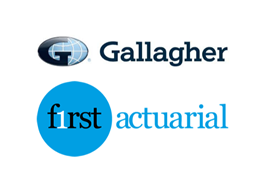South Yorkshire Pension Authority has increased its allocation to equities over the past three years, concluding that stock selection within its equity portfolios helped it produce positive returns against the benchmark.
South Yorkshire Pension Authority asset allocation
International equities: 39.4%
UK equities: 21.3%
Fixed interest: 21.5%
Property: 9.2%
Absolute return: 2.2%
Private equity: 4.8%
Cash: 1.6%
This comes as a contrast to other schemes, for example the Isle of Wight Pension Fund, which have decreased allocation to equities in favour of investments such as diversified growth funds that target equity-like returns with downside protection.
The £5.3bn South Yorkshire Pension Authority had 60.3 per cent of its portfolio allocated to equities at the end of the 2012/13 financial year, compared with 57.3 per cent in the previous year and 57.7 per cent¹ in 2010/11.
The fund’s annual report stated its cautious approach of long-term investments helped ride uncertain markets. “Stock selection across the equity portfolios and also in property helped the fund produce a positive return against the benchmark,” it stated. The fund produced an overall return of 13.6 per cent compared with 5.5 per cent in 2011/12.
Keeping faith in equities
It is not uncommon for local authority schemes to have a high proportion of assets in equities but Jon Exley, a partner in KPMG's investment advisory practice, said South Yorkshire is at the top end of the scale.
If schemes had had an aggressive [allocation] to equities, it would have solved a lot of their solvency problems
He added that it is "relatively rare" for schemes to have increased allocations to equities.
Schemes do not have to have dynamic derisking strategies, they can decide how much equity they want and keep a constant allocation to the asset class. "A more efficient way of running things may be to decide how much risk [the scheme] is comfortable with and keep running that, rather than planning to derisk as the market rises to reduce exposure," Exley said.
Investment experts are still positive about further good equity performance.
“Our view is still that equities might not continue to rise as much as they have in the past, but they still look good relative to the bond portfolio,” said Tim Giles, partner at consultancy Aon Hewitt.
As volatility in equity markets has recently reduced, the price of buying downside protection has also fallen for schemes that want to insure against market falls.
“It is going to come with an insurance premium,” added Giles. “[Some schemes are thinking] if that premium means I am going to give up all my equity returns, it’s actually cheaper to have less equities.”
South Yorkshire, like other schemes, has decreased its exposure to UK equities while increasing its allocation to overseas equities, which represented 39.4 per cent of the entire portfolio compared with 35.4 per cent in the previous year.
Nick Mottram, partner at asset manager Dalton Strategic Partnership, said there has been a big shift from regional to global equities. "There is a pivot point at the moment and pension schemes are debating the role of equities in their portfolios... A lot of that is coupled with it being a tough decade for equities," he said.
Equity investors over the past five years have experienced what was considered the worst-case scenario for equity holdings – gross overvaluation, sharp collapses in values and in some cases permanent loses.
"In a sense they remember that bit and not that markets are up 50 or 60 per cent since then," added Mottram. "If pension schemes had had an aggressive [allocation] to equities, it would have solved a lot of their solvency problems."
¹This figure is based on the proportion of equities out of net investment assets, as found in the fund's 2010/11 annual report. The original version of this article incorrectly stated this proportion as 56.8 per cent.






















